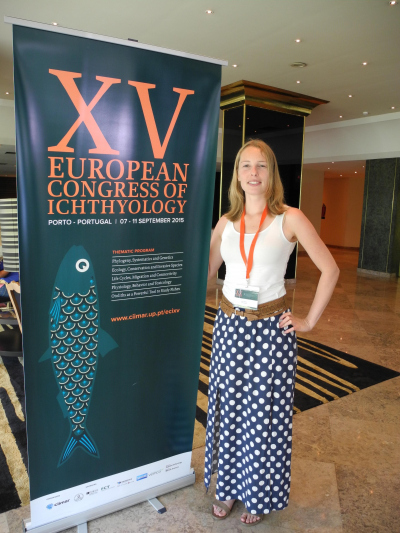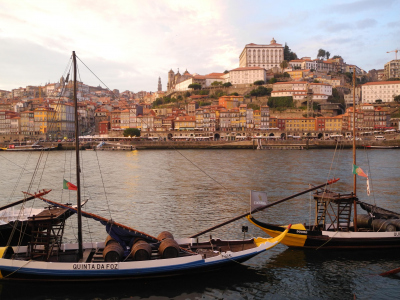Die Inhalte dieser Seite sind leider nicht auf Deutsch verfügbar.
Seitenpfad:
Kim Vane
Report of GLOMAR PhD student Kim Vane about her participation in the 15th European Congress of Ichthyology (ECI XV) in Porto, Portugal from 7 – 11 September 2015
The 15th European Congress of Ichthyology (ECI XV) was organised in Porto, Portugal on September 7-11, 2015 by the Interdisciplinary Centre of Marine and Environmental Research (CIIMAR). This conference covered a variety of topics concerning freshwater and marine fish, from for example pylogeny and behaviour to toxicology, migration and otoliths. The conference was attended by an international research community that lead to a very interesting insight into the research done worldwide in for example Russia, China, Brazil, Chili, U.S.A., and many European countries. It was a good opportunity for a fish biologist to see their topic in a broader sense and network with a broad scientific community.
Personally, the most interesting plenary session was given by Dr. Steven Campana, who is regarded to be one of the most influential and knowledgeable researchers on the topic of otolith aging and chemistry. He presented his latest work on otolith chemistry and also gave me some interesting insights that I could use in my own project. Also many other researchers presented their latest developments in otolith chemistry that showed the interesting applications for fish ecology.
The topic I presented ‘A quick and easy way to measure δ13C in essential amino acids of otoliths’ was given in the special symposium ‘Otoliths as a tool to study fish life cycles’. This type of research is still quite unknown in the otolith research community and has not seen much continuation after its first introduction. Therefore, my goal was to inform about a new angle on otolith chemistry and show that the analysis can be done in a faster and more accurate way. This was also to inspire more scientists to work in this new field and explore the possibilities that this organic otolith chemistry can provide in fish ecology. The response I received definitely indicated that people seemed to be interested and approached me with their own ideas and projects to see whether they could use this analysis. This was also very stimulating to hear how this analysis can be applied in various different ways.
I thank GLOMAR for giving me this opportunity to show my work on an international conference and the opportunity to network within an international community.
Personally, the most interesting plenary session was given by Dr. Steven Campana, who is regarded to be one of the most influential and knowledgeable researchers on the topic of otolith aging and chemistry. He presented his latest work on otolith chemistry and also gave me some interesting insights that I could use in my own project. Also many other researchers presented their latest developments in otolith chemistry that showed the interesting applications for fish ecology.
The topic I presented ‘A quick and easy way to measure δ13C in essential amino acids of otoliths’ was given in the special symposium ‘Otoliths as a tool to study fish life cycles’. This type of research is still quite unknown in the otolith research community and has not seen much continuation after its first introduction. Therefore, my goal was to inform about a new angle on otolith chemistry and show that the analysis can be done in a faster and more accurate way. This was also to inspire more scientists to work in this new field and explore the possibilities that this organic otolith chemistry can provide in fish ecology. The response I received definitely indicated that people seemed to be interested and approached me with their own ideas and projects to see whether they could use this analysis. This was also very stimulating to hear how this analysis can be applied in various different ways.
I thank GLOMAR for giving me this opportunity to show my work on an international conference and the opportunity to network within an international community.




